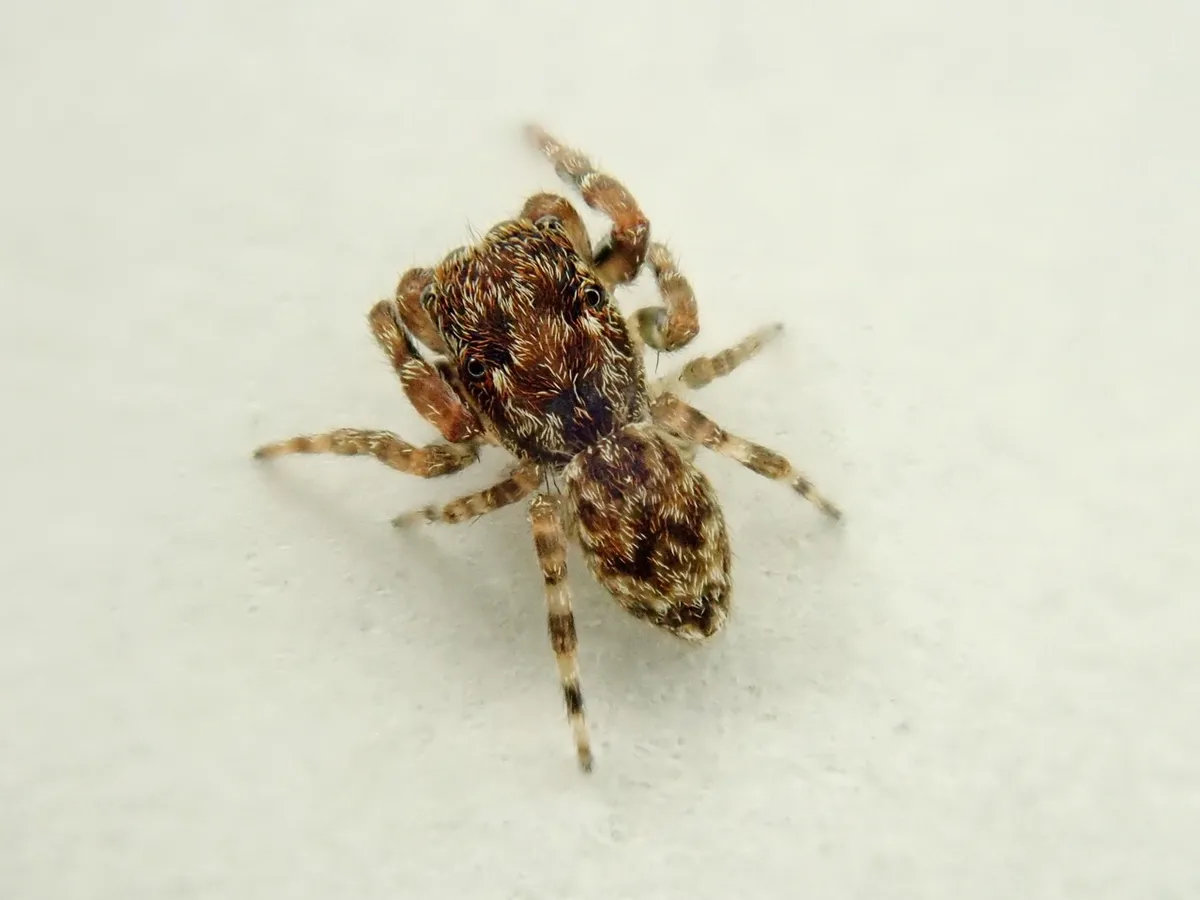Anasaitis milesae is less than 3mm long; this new species of jumping spider is clearly easy to miss. And yet it’s not hard to find, if you know where to look.
The tiny arachnid was found on the grounds of the University of Exeter’s campus in Penryn, Cornwall.
“This doesn’t happen very often,” says Tylan Berry, the British Arachnological Society’s Devon and Cornwall area organiser.
“Britain is one of the best-scoured countries in the world for arachnids.” He explains that it can be found in good numbers by beating the lower branches of trees and shrubs over a sheet. It has since turned up at a second site 30 miles away.
- Do jumping spiders dream?
- Why do spiders eat their own webs?
- Where and when to see spider webs in the UK
- Truth or fiction: false widow spiders are a danger to children

How was Anasaitis milesae found?
At a Bioblitz event organised by students to engage the public in species identification, Berry was handed a spider he didn’t recognise. “After months of research, it was definitely nothing European. The search widened until I’d exhausted my expertise.” So he passed it on to Dmitri Logunov, a jumping-spider specialist at the Manchester Museum. “And here we are, a year later, with a new species.”
- 14 incredible spider facts you probably didn't know
- World's most venomous spiders
- Do spiders have teeth?
- Can spiders fish

Is this jumping spider unique to Britain?
Only in the sense that it hasn’t been found anywhere else yet. It is unlikely to be native to these islands. Its closest relatives live in the West Indies, from where it was probably introduced with imported plants.

What's the meaning behind the scientific name?
Logunov named the spider after his Manchester Museum colleague Claire Miles, a natural historian and honorary curator, who died last year.
Read more about the study: bioone.org/journals/arachnology